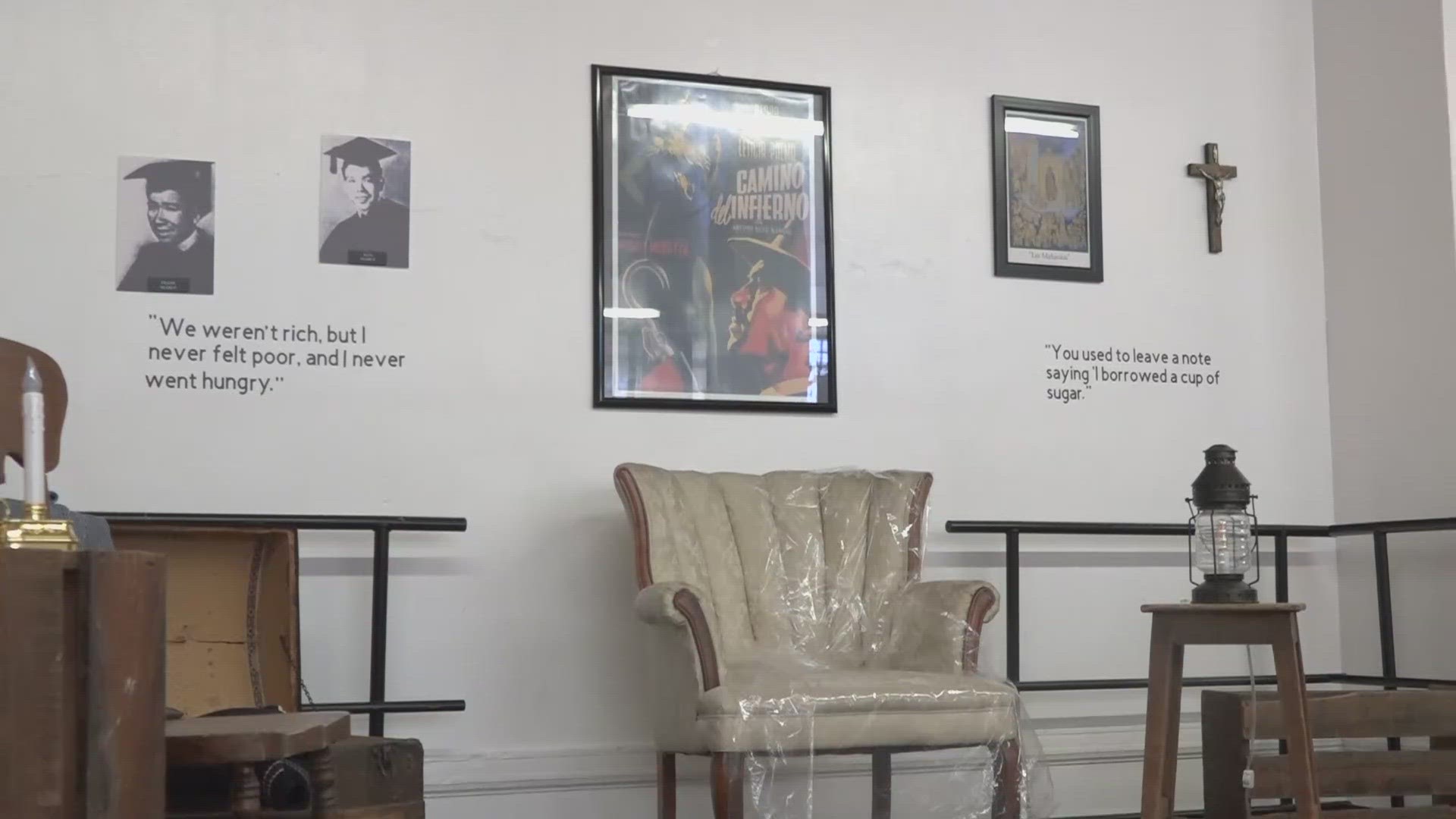STOCKTON, Calif — An new exhibit is giving an inside look at the effects of a historic redevelopment in 1950s East Stockton that can't be found in an ordinary library book.
Stockton's Mexican Heritage Center unveiled its newest show for this month, The Spirits of Barrio Del Chivo 'Goat Valley,' telling the stories of a close-knit community of color forced out of their homes due to being labeled a slum.
"When somebody was sick, they said they didn't go to doctors, they all went to church and prayed for the person," said Mexican Heritage Center executive director Gracie Madrid. "They said they never went hungry because even if the person of the house wasn't there, they could always go in the house, borrow sugar, borrow whatever they needed."
The neighborhood called Barrio Del Chivo, or 'Goat Valley,' was a community of a majority Hispanic and some Black members. According to Madrid, it was called Goat Valley because a lot of goats were raised and eaten in the area.
At the time, the state was giving out grants to cities like Stockton to identify several underdeveloped communities, labeling them "slums" and they would choose one for state-funded redevelopment.
"This was unfortunately the area selected by the city council to demolish and the reason they declared it a slum area was because they said it was unhealthy," said Madrid. "There was no indoor plumbing and they just said it was not safe to be there."
The exhibit also features voices from people who lived in the neighborhood telling the stories of how the community came together in times of need despite living in poverty.
A majority of people living in the slum at the time owned their homes and according to testimonies voiced by former residents in the exhibit, the amount the cities gave them in exchange for their homes wasn't enough to afford homes outside of the community.
"Some of their houses were cardboard boxes, but it was their home and they were happy there," said Madrid. "They had to find another place to live and they didn't have the money."
Community organizations and activists like the NAACP, Delores Huerta and several others came forward during meetings to voice their opposition to the redevelopment and alternative motions, all of which are printed out for display in the exhibit.
"When they were discussing it [it] caused a lot of bad feelings with the people and they had meetings and a lot of the community people would come in saying they wanted a self-help program instead of demolishing and doing away with the neighborhood," said Madrid.
Council meeting notes from the time the decision was made, photos from the time in the slum, clothes, furniture and exclusive interviews with former residents will be featured in the show until July 28 at the Mexican Heritage Center on S. Sutter Street.
The immersive exhibit has been seven years in the making which, according to Madrid, was due to how hard it was to uncover any information about the historic event.
Watch more from ABC10: Underwater Junkyard: Dozens of vehicles sit below the surface of the San Joaquin River



















